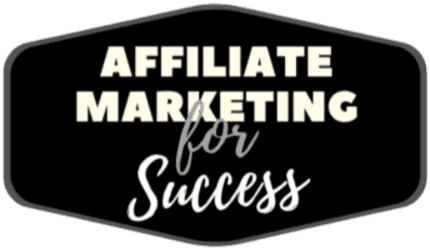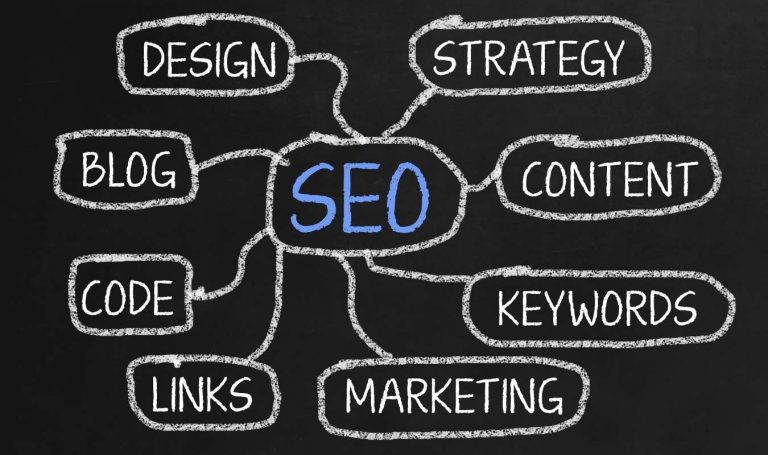Sustainable Content: 7 Proven Strategies for Long-Term Growth
Forget fluffy “evergreen” advice. Sustainable content is content that continuously generates traffic, leads, and affiliate commissions – passively. It’s about building a long-term asset, not chasing short-term trends. This guide is about actionable strategies, not theory. It builds long-term value.
The Core Principle: Create content that solves real problems for your specific target audience, and keeps solving them over time.
Key Takeaways:
Solve Real Problems: Create relevant content for your audience.
Keyword Research: Target long-tail keywords effectively.
User Experience: Optimize for readability and mobile.
Active Promotion: Engage on social media and via email.
Content Management: Regularly audit and refresh content.
Sustainability Focus: Promote eco-friendly products and practices.
I. Why “Evergreen” Isn’t Enough (The Real Definition)
Sustainable content is:
Relentlessly Relevant: Stays relevant to your audience and the affiliate products you promote, even as their needs evolve.
Bulletproof Longevity: “Future-proofed” against changes in your niche. Easy to update.
- A Repurposing Powerhouse: Designed to be transformed into multiple content formats (video, infographic, social posts, podcast, lead magnet). This maximizes your content marketing efforts. Discover how to effortlessly repurpose your content.
Obsessively Optimized (Beyond SEO): Focuses on user experience (UX) and conversion rate optimization (CRO).
Problem-Solving Focused: Provides genuine value and builds trust. This is the foundation of a sustainable business. This is a fundamental characteristic of sustainable business practice.
II. The Actionable Blueprint (No Fluff)
A. Keyword Research: Find the Hidden Gems
“Jobs to Be Done”: Focus on what your audience is really trying to achieve, not just the keywords they’re typing.
Example: Instead of “best yoga mat,” target “yoga for back pain relief at home.”
Long-Tail Keywords (Dig Use:
AlsoAsked.com
AnswerThePublic
Reddit, Quora, niche forums
Competitor Analysis (Steal Strategies): Use Ahrefs, SEMRush, BuzzSumo to analyze their top-performing content, backlinks, and social media activity. Do it better. Master advanced competitor analysis techniques.
“Future-Proofing” Test: Ask: “Will this be relevant in 2-5 years?”
Focus on content topics.
Create content ideas based on these strategies.
B. Content Creation: Build an Asset
Content Brief (Mandatory): Before writing, define:
Keywords (primary & LSI)
Target audience
Purpose
Key points (outline)
Tone
Call to action (CTA)
Affiliate products (integrated naturally)
Internal & external links
QRIES Framework:
Quotes: From recognized experts (reach out directly).
Research: Go beyond Google’s first page. Cite meticulously.
Images: Create custom graphics, videos (Canva, Visme).
Examples: Real-world case studies, personal anecdotes.
Statistics: Up-to-date, explained for relevance.
Stories, Controversy, Humor, Personalization: Inject humanity.
“Skyscraper Technique” (On Steroids): Explore videos, infographics, podcasts, ebooks, webinars, interactive content. Repurpose everything. Explore diverse content types for maximum impact.
Go Beyond Blog Posts: Explore videos, infographics, podcasts, ebooks, webinars, interactive content. Repurpose everything.
Remember the content creation process.
C. Optimization: Beyond the Basics
On-Page SEO (Foundation):
Keyword-rich, clickable title tag.
Compelling meta description (mini-ad).
Strategic H1-H6 headings.
Natural keyword usage in body text.
Image alt text (descriptive, not stuffed).
Internal linking (connect your content). Learn the importance of SEO for your blog.
External linking (to authority sites).
Semantic SEO: Use LSI keywords (Surfer SEO, Clearscope).
User Experience (UX) is King:
Easy to Read: Short paragraphs, bullet points, subheadings.
Visually Appealing: High-quality visuals, white space.
Mobile-Friendly: Responsive design.
Fast-Loading: Optimize images, use caching, good hosting.
Featured Snippet Optimization: Aim for the top spot. Answer questions directly, concisely. Use lists, tables.
Schema Markup: Use a plugin (Yoast SEO, Rank Math). Understand the power of schema markup.
D. Promotion: The Hustle
Don’t Just Build It: Actively promote your content.
Social Media (Strategic): Engage, answer questions, build relationships on relevant platforms.
Email Marketing (Build Your List): Offer a valuable lead magnet. Segment your list. Send targeted emails. Master proven email marketing strategies.
Guest Blogging: Build authority and backlinks.
Outreach: Connect with influencers and other bloggers.
Paid Promotion (Optional): Google Ads, Facebook Ads (start small, test).
E. The Long Game: Content Management
Content Audit (Regularly): Review all content. Identify top performers, underperformers, outdated content, and content gaps.
Content Refresh: Update statistics, add new information, improve quality. Learn the art of refreshing existing content.
Content Prune: Delete irrelevant content.
III. Affiliate Marketing + Sustainable Content = Passive Income
A. Product Comparisons That Convert
Focus on Benefits, Not Features: How does each product solve a specific problem?
Be Honest: Point out the cons. Build long-term trust.
Compelling Visuals: High-quality images, tables, videos.
Clear CTAs: Make it easy to buy.
“Best For” Categories: “Product A is best for [specific need].”
Personal Anecdotes: Share your experiences. Learn how to write compelling affiliate product reviews.
B. “How-To” Guides
Integrate Products Naturally: Don’t force it.
Visuals: Screenshots, videos.
Alternatives: Offer options at different price points.
Actionable Steps: Clear instructions. Create high-converting “how-to” guides.
C. Buying Guides
Become the Trusted Advisor: Help your audience understand what to look for.
“Buyer Beware”: Warn about scams, low-quality alternatives.
FAQs, Glossary, Checklist: Provide comprehensive information.
D. CTA Placement
Ask for the Sale (Subtly): Use a mix of buttons, text links, banners.
Test and Optimize: Experiment with placement and wording.
Benefit-Driven CTAs: “Get Instant Access,” not “Click Here.”
Contextual CTAs: Place them in relevant sections. Optimize your CTAs for maximum conversions.
IV. The AI Advantage (Use Wisely and Ethically)
Idea Generation: Brainstorm hundreds of ideas (Jasper, Copy.ai, Frase). Refine them.
Content Outlines: Create detailed outlines (faster). Customize them.
Writing Assistance: Improve grammar, style, keyword optimization. Never publish AI-generated content without thorough editing and humanization.
SEO Optimization: Identify keywords, analyze competitors, track rankings (automated). Explore the power of AI in affiliate marketing.
Content Repurposing: Transform content into different formats (automatically).
The Human Touch (Essential):
Personality: Your voice, experiences, opinions.
Humor (When Appropriate):
Conversational Tone: Write like you’re talking to a friend.
Questions: Engage your readers.
Break the Rules (Sometimes): For stylistic effect.
Analogies, Metaphors:
Original Research: Surveys, interviews, experiments.
Emotional Connection: Stories, evoke feelings.
Ethical practices: Understand the ethical implications of AI.
V. The Sustainability Angle: A Massive Opportunity
Consumers increasingly care about environmental impact and social responsibility. They seek sustainable products and sustainable brands. This is your chance.
Promote Products with a Positive Impact: Highlight eco-friendly products, ethical sourcing, and companies with a strong commitment to sustainability. Reduce the environmental impact and the carbon footprint. Focus on the sustainability space.
Create Content Around Sustainability Topics: Educate your audience about environmental issues, sustainable practices, and the benefits of choosing sustainable options. Discuss greenhouse gas emissions and carbon emissions. Talk about environmental responsibility. Promote environmental stewardship.
Partner with Sustainable Brands: Seek out affiliate programs that align with your values and your audience’s interest in sustainability.
Be Transparent About Your Own Sustainability Efforts: Share your own journey towards a more sustainable lifestyle. Be authentic.
Highlight Certifications and Labels: Educate your audience about certifications like Fair Trade, Organic, B Corp, etc.
Build a Community: Connect with like-minded consumers and create a space for discussion and sharing of information. Create digital campaigns
Target the eco-conscious consumers.
Use email newsletters
Understand that this is a marketing trend.
Target a like-minded audience.
It can be educational content.
Avoid the digital divide
Promote entire organizations that are commited with the cause. Develop a winning blog content strategy.
This concise guide provides the core strategies and action steps for building a successful affiliate marketing business with sustainable content. It’s designed to be a practical, actionable resource that you can refer back to again and again. Remember, consistency and a genuine commitment to providing value are key.
References:
[1] https://www.affiversemedia.com/sustainable-practices-in-affiliate-marketing/
[3] https://www.authorityhacker.com/eco-friendly-affiliate-programs/
[4] https://onepage.io/blog/post/affiliate-marketing-passive-income
[5] https://earnkaro.com/blog/affiliate-marketing-passive-income/
[7] https://uppromote.com/blog/eco-friendly-affiliate-programs/
[8] https://www.clickbank.com/blog/is-affiliate-marketing-passive-income/
[9] https://onlinemediamasters.com/how-to-make-money-with-affiliate-marketing/
[11] https://clickwire.io/blog/top-10-green-eco-friendly-affiliate-programs
[12] https://www.hausmanmarketingletter.com/how-to-build-passive-income-in-affiliate-marketing/
[13] https://eyowhite.com/sustainable-affiliate-promoting-eco-products-and-brands/
[14] https://www.wati.io/blog/what-is-passive-income-5-affiliate-programs-to-earn-it-in-2024/
[15] https://pathmonk.com/best-niches-for-affiliate-marketing-to-boost-your-passive-income/
[16] https://ecosend.io/blog/23-eco-friendly-affiliate-marketing-programs
[17] https://backlinko.com/affiliate-marketing
[20] https://www.accelerationpartners.com/resources/sustainability-initiatives-affiliate-marketing/
[21] https://konnant.com/40-top-eco-friendly-affiliate-programs-for-sustainability-bloggers/
[22] https://www.skimlinks.com/blog/eco-friendly-affiliate-programs/
[23] https://douyinselect.com/blogs/291.html
[24] https://www.lemlist.com/blog/affiliate-marketing-strategies
[25] https://influencermarketinghub.com/eco-friendly-marketing-strategies/
I’m Alexios Papaioannou, an experienced affiliate marketer and content creator. With a decade of expertise, I excel in crafting engaging blog posts to boost your brand. My love for running fuels my creativity. Let’s create exceptional content together!












